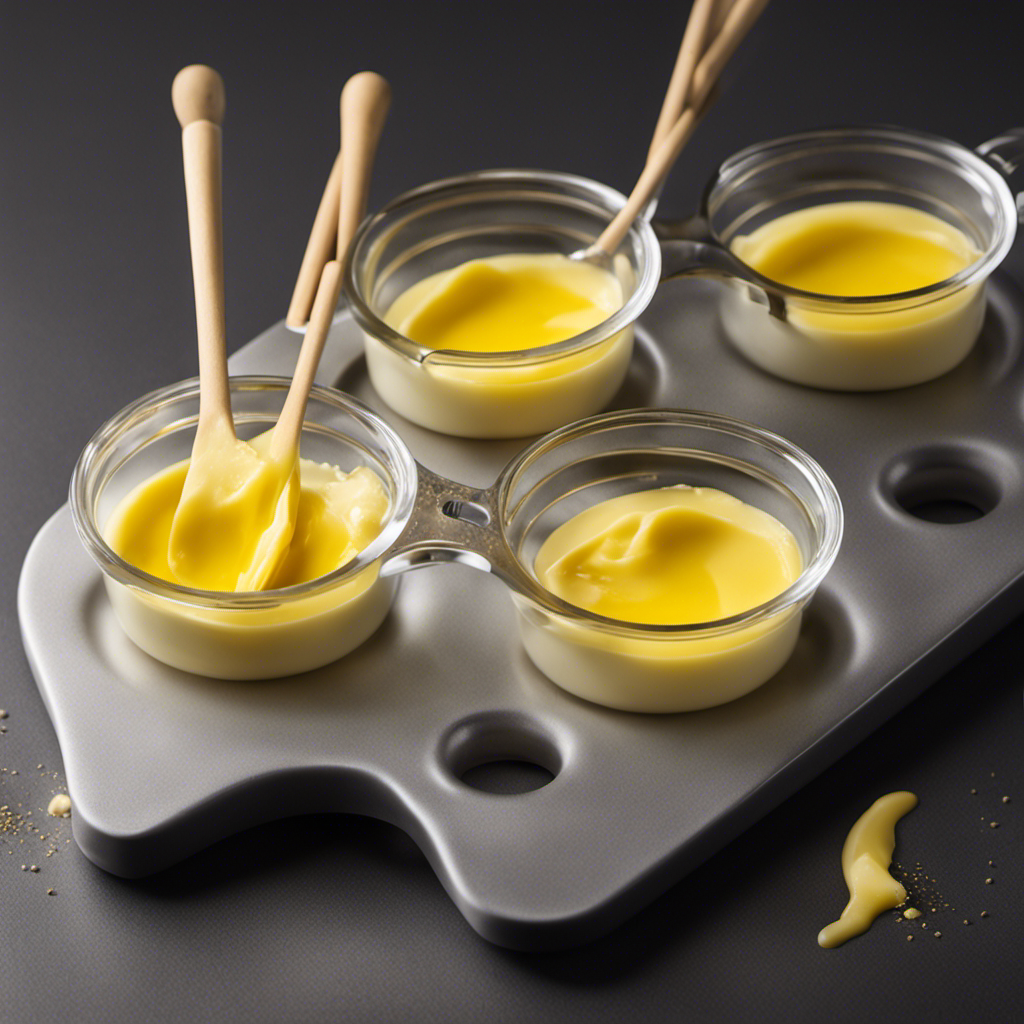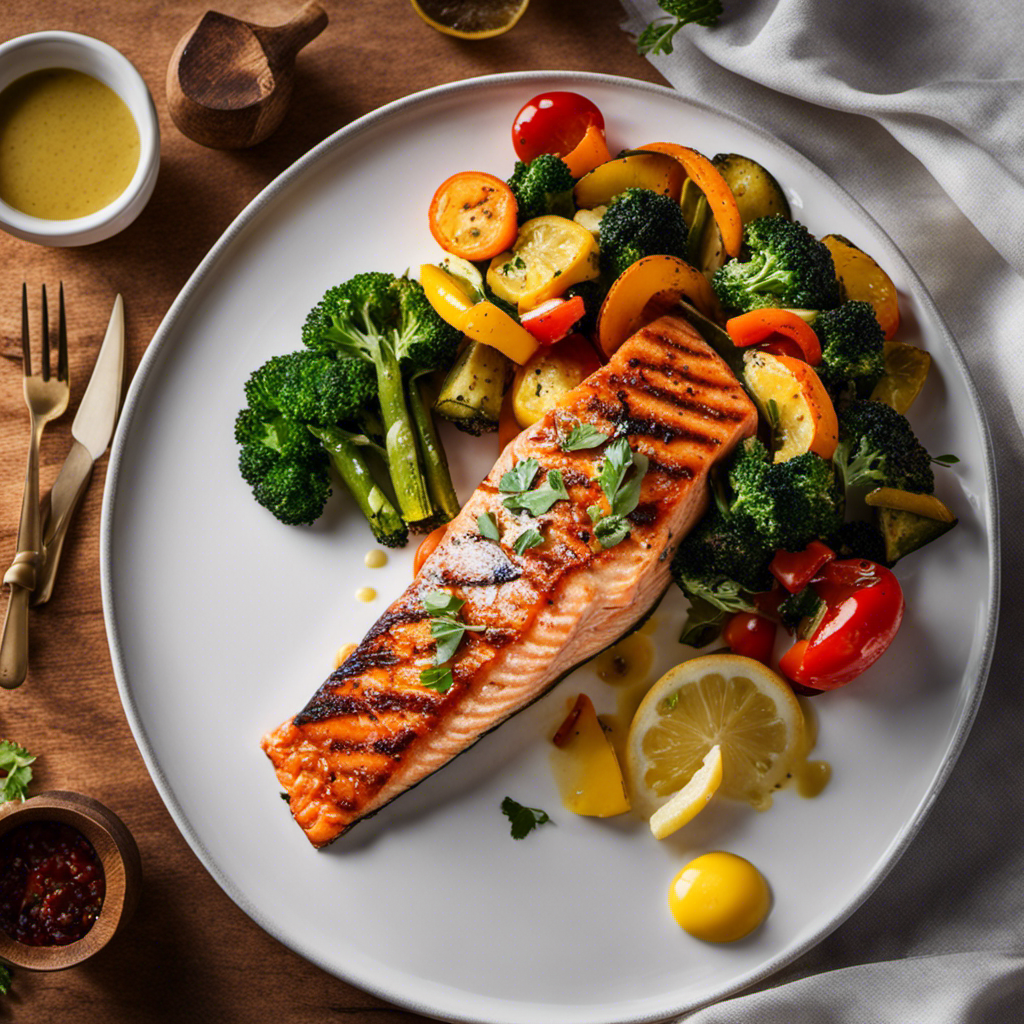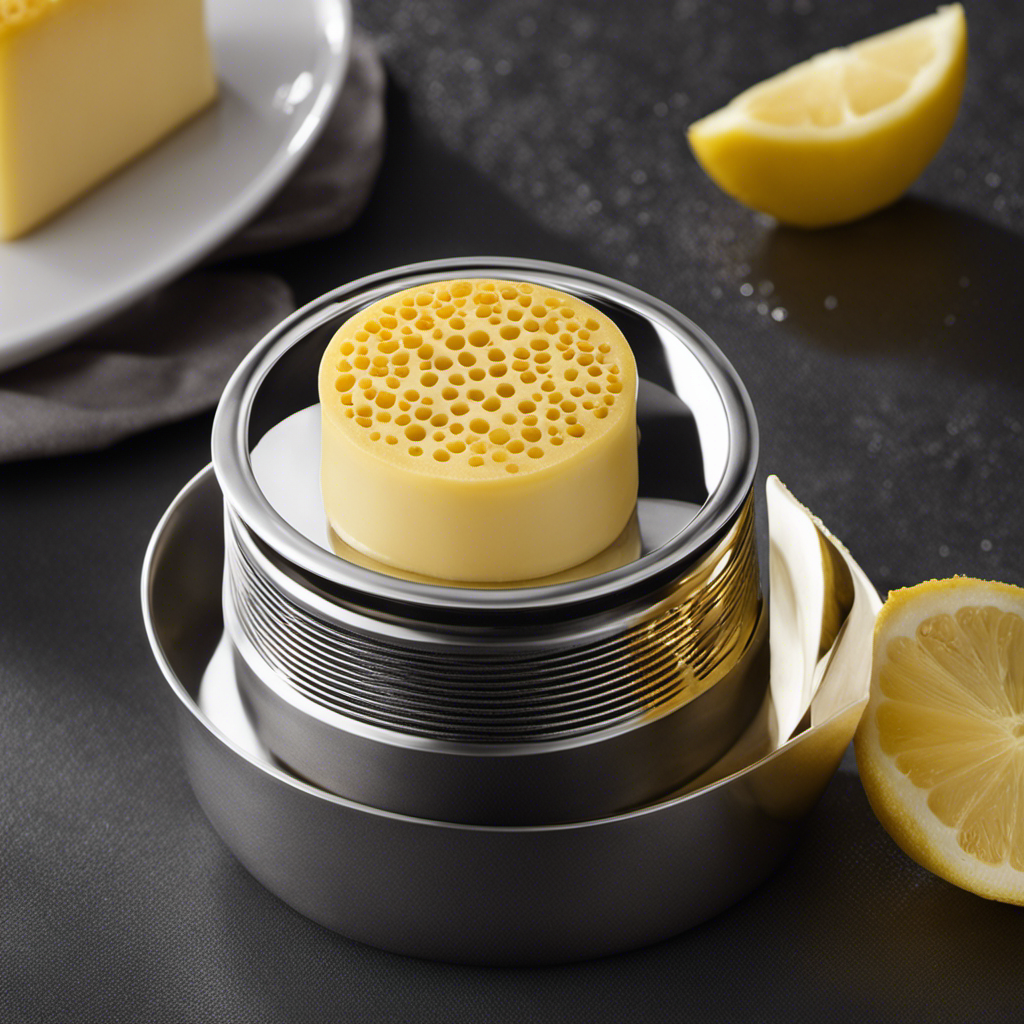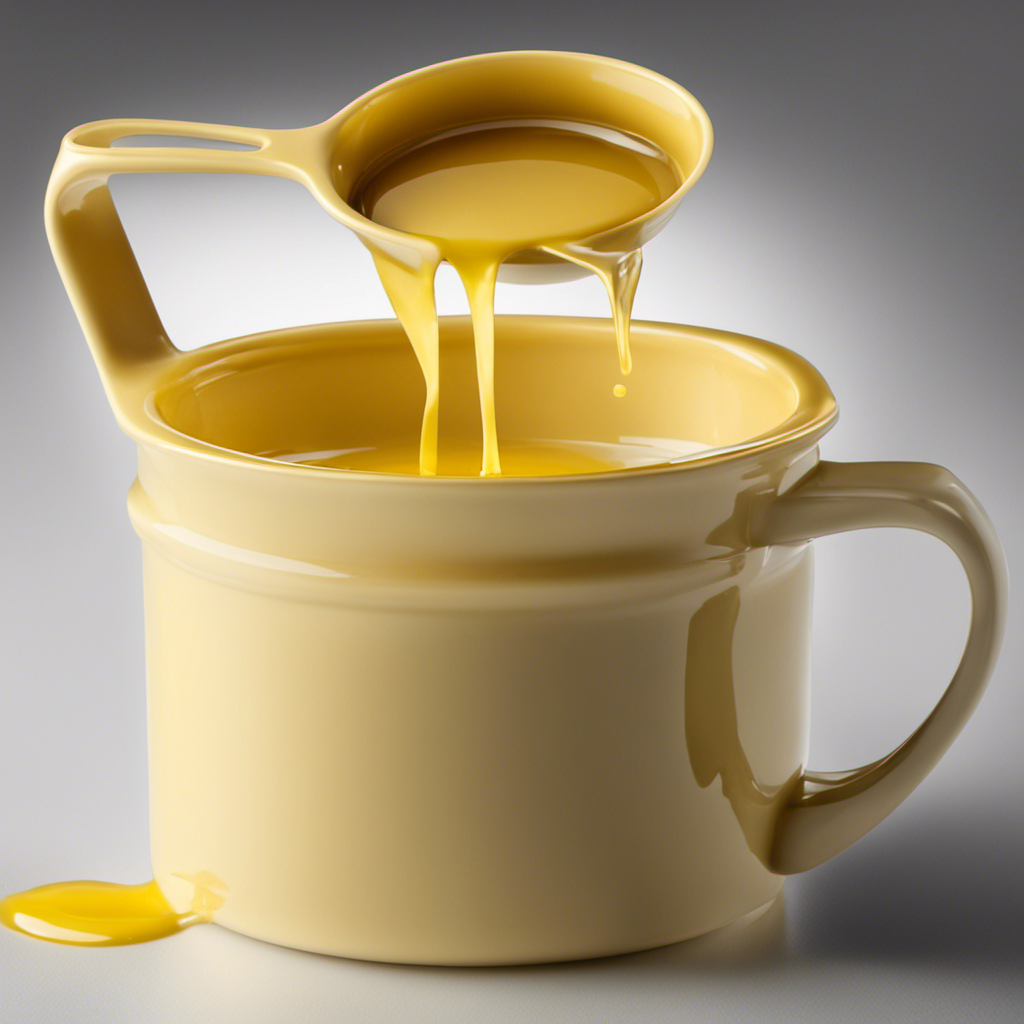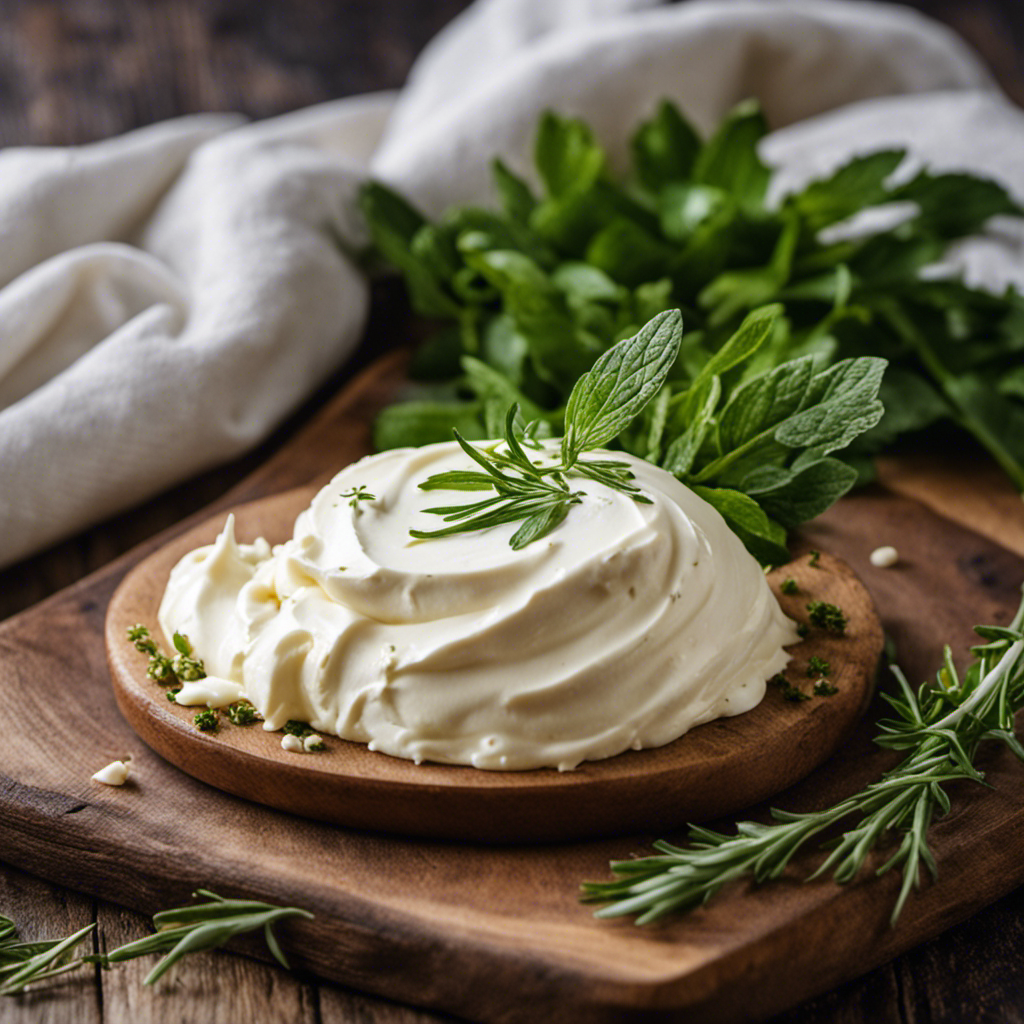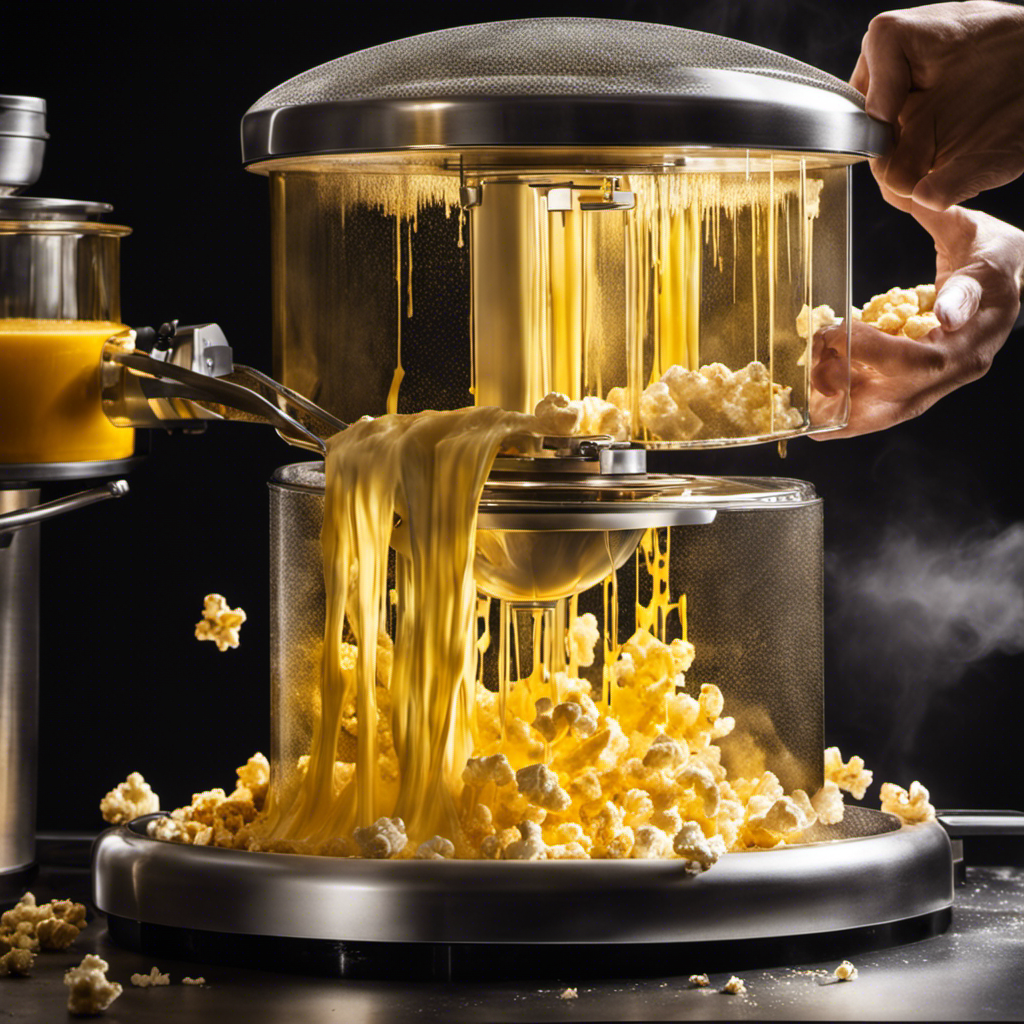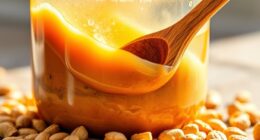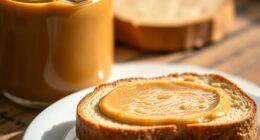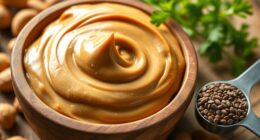In the realm of baking, grasping the concept of butter measurements is crucial.
Have you ever wondered how many sticks of butter are in 3/4 cup?
In this article, I’ll break it down for you.
Picture this: you’re in your kitchen, ready to whip up a delicious batch of cookies, but the recipe calls for 3/4 cup of butter. How many sticks do you need?
Don’t worry, I’ve got you covered.
Let’s dive into the world of butter measurements and uncover the answer together.
Key Takeaways
- Two sticks of butter are equal to one cup, so 3/4 cup of butter is equal to 1.5 sticks.
- Understanding butter measurements can help navigate recipes and ensure accurate measurements.
- Converting cups to sticks of butter is important when following a recipe, and 3/4 cup of butter requires 1.5 sticks.
- It is essential to measure butter accurately using a measuring cup or kitchen scale to avoid mistakes in recipes.
Explanation of Butter Measurements
If you’re wondering how many sticks are in a cup of butter, the answer is typically two. However, it’s important to note that this may vary slightly depending on the brand and type of butter.
Butter measurements can be a bit confusing, but once you understand the basics, it becomes easier to navigate recipes.
When it comes to butter storage, it’s best to keep it in the refrigerator, tightly wrapped or in an airtight container to prevent it from absorbing any unwanted odors.
As for different types of butter, there are various options available such as unsalted butter, salted butter, clarified butter, and European-style butter. Each type has its own unique flavor and can be used in different culinary applications.
Converting Cups to Sticks of Butter
To convert a certain amount of butter to sticks, all you need to do is divide the given amount by 0.5. It’s a simple calculation that can save you from any confusion when it comes to butter measurement conversions.
Here are some tips to help you out:
- Remember that 1 stick of butter is equal to 0.5 cups.
- If you have 1 cup of butter, it means you have 2 sticks.
- For 2 cups of butter, you’ll need 4 sticks.
- If you only have a quarter cup of butter, that’s half a stick.
- And for a whole pound of butter, you’ll have 4 sticks.
Converting cups to sticks of butter is really handy when following recipes or trying to figure out how much butter you need for a specific dish. With these measuring equivalents in mind, you’ll never have to worry about getting your butter measurements wrong again.
The Standard Size of a Butter Stick
When you’re preparing a recipe, remember that the standard size for a stick of butter is typically 1/2 cup. This means that if a recipe calls for 1 cup of butter, you will need 2 sticks.
But have you ever wondered about the dimensions of a butter stick? Well, a standard stick of butter measures about 4 inches long, 1 inch wide, and 1/2 inch thick. These dimensions make it easy to slice or measure the butter for your recipes.
However, if you’re looking for alternatives to butter sticks, there are a few options you can consider. Some popular alternatives include using margarine, coconut oil, or vegetable shortening. These alternatives can be used in the same quantities as butter sticks, so you can still achieve the desired results in your recipes.
Now that you know the standard size of a butter stick and the alternatives available, let’s move on to understanding butter packaging labels.
Understanding Butter Packaging Labels
Now that you’re familiar with the dimensions of a standard butter stick, let’s dive into understanding the information found on butter packaging labels.
It’s important to read the nutrition label on butter packaging because it provides valuable information about the product you’re consuming. Here are some key points to consider:
-
Nutritional Information: The label will tell you the amount of calories, fat, cholesterol, and other nutrients in each serving of butter.
-
Ingredients: You can find a list of all the ingredients used to make the butter, which is useful for those with dietary restrictions or allergies.
-
Serving Size: The label will specify the recommended serving size, helping you portion your butter intake.
-
Different Types of Butter: The packaging may indicate if the butter is salted or unsalted, and may also specify if it’s made from traditional or organic sources.
-
Additional Information: Some labels may provide additional details such as the origin of the butter or any certifications it has.
Tips for Measuring Butter Without a Scale
If you don’t have a scale, you can estimate the amount of butter needed for a recipe by using common household items. There are alternative methods to measure butter without a scale, and one of them is by using visual cues.
For example, one stick of butter is typically equal to 1/2 cup or 8 tablespoons. So, if your recipe calls for 1 cup of butter, you can easily measure it by using two sticks.
Another visual cue is the markings on the butter wrapper itself. Many butter packages have measurements printed on the wrapper, indicating how much butter is in each tablespoon or ounce.
Common Mistakes When Converting Butter Measurements
To avoid common mistakes when converting butter measurements, remember to be mindful of the units and use the appropriate measuring tools. It’s easy to make errors when converting between cups and sticks of butter, but with a little bit of knowledge, you can avoid these common misconceptions. Here are some common errors to watch out for:
-
Assuming that one cup of butter is equal to one stick. In reality, one stick of butter is equivalent to half a cup.
-
Not properly measuring the butter. Using a butter knife or spoon to measure can lead to inaccurate measurements. Instead, use a measuring cup or a kitchen scale for precise results.
-
Forgetting to convert between different units. Make sure to convert between cups, sticks, and grams depending on the recipe requirements.
-
Ignoring the butter’s temperature. Recipes often call for softened or melted butter, so be sure to follow the instructions to achieve the desired result.
-
Overcompensating for the conversion. It’s better to measure the butter accurately rather than adding extra to compensate for any perceived discrepancies.
Frequently Asked Questions
Can I Use Margarine Instead of Butter When Baking?
Yes, you can use margarine instead of butter when baking. However, there are some pros and cons to consider. Margarine can affect the taste and texture of baked goods, so it’s important to choose the right type for your recipe.
How Do I Convert Tablespoons of Butter to Cups?
To convert tablespoons of butter to cups, simply divide the number of tablespoons by 16. Measuring butter accurately is crucial in recipes as it affects the texture and flavor.
What Is the Difference Between Salted and Unsalted Butter?
When it comes to baking, the choice between salted and unsalted butter depends on personal preference. Salted butter adds a hint of saltiness to baked goods, enhancing their flavor. However, unsalted butter allows for better control of the salt content in recipes.
How Can I Soften Butter Quickly for Baking?
To quickly soften butter for baking, there are a few alternatives to consider. One method is to cut the butter into small cubes and let it sit at room temperature for about 10-15 minutes. Another option is to microwave it on low power for 5-10 seconds at a time, checking and stirring in between until it reaches the desired consistency. These quick methods are handy when you’re in a pinch!
Can I Use Oil Instead of Butter in a Recipe?
Using oil instead of butter in a recipe can be a great substitute. It adds moisture and a different flavor profile. However, keep in mind that the texture of the final product may be slightly different.
Conclusion
So there you have it, folks! I hope this article has shed some light on the ever-confusing world of butter measurements.
Remember, when a recipe calls for 3/4 cup of butter, that is equivalent to 1 and a half sticks of butter. It’s always important to understand the standard size of a butter stick, which is typically 1/2 cup or 8 tablespoons. And don’t forget to read those butter packaging labels carefully to ensure you’re using the right amount.
Now, here’s an interesting fact to leave you with: did you know that the average American consumes about 5.6 pounds of butter per year? That’s a whole lot of buttery goodness!
So go ahead, whip up those delicious recipes and enjoy the magic of butter.
